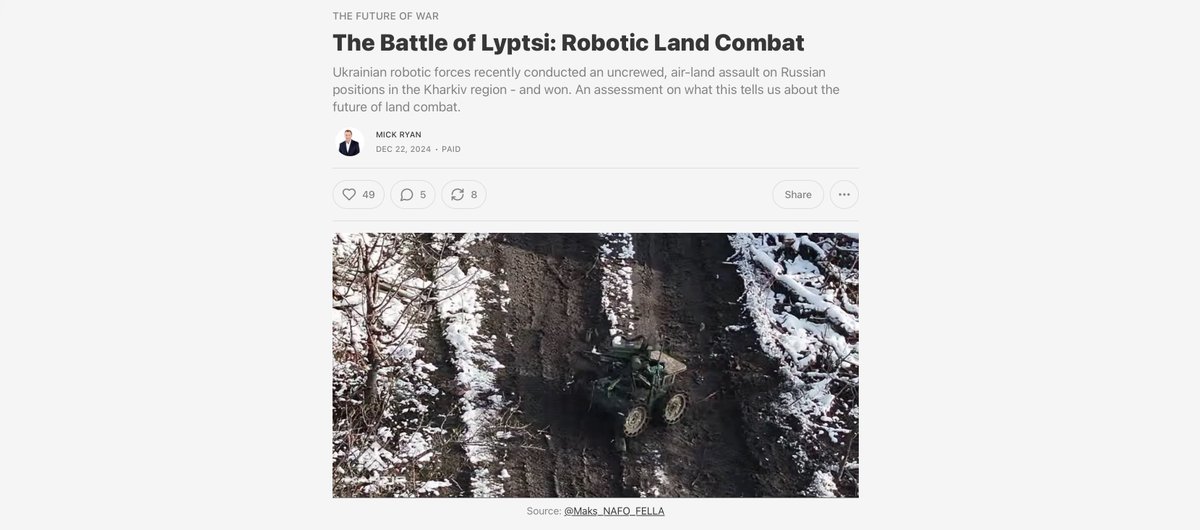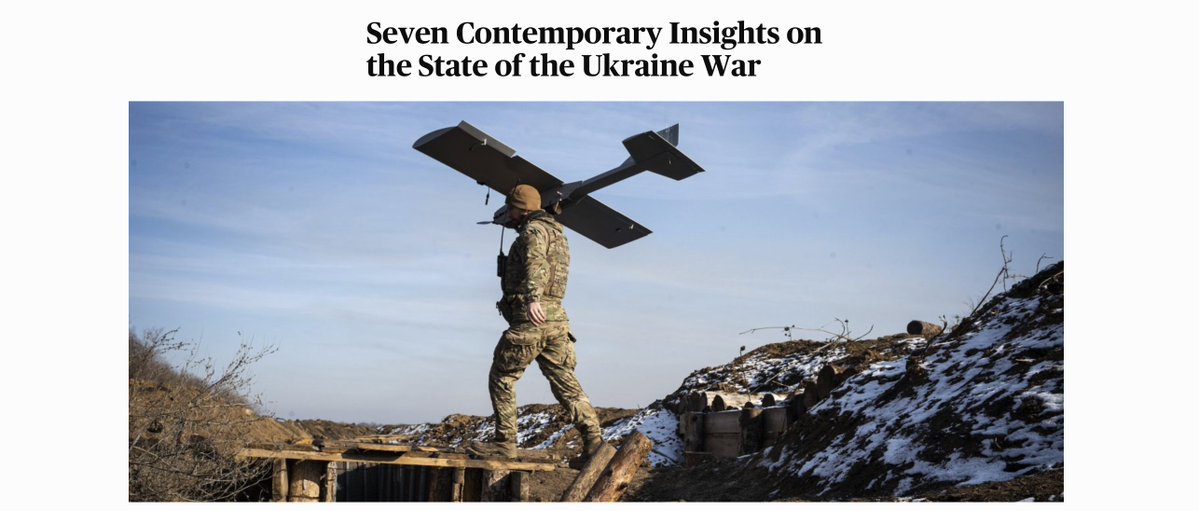In the past 48 hours, reports have emerged of a Ukrainian attack on Russian positions near the village of Lyptsi in the Kharkiv region. The attack utilised dozens of uncrewed ground combat vehicles (UGV). 1/5 🧵🇺🇦 

2/ The UGVs were apparently supported throughout the activity by FPV drones. While this doesn’t make the attack fully autonomous – the vehicles need human operators – it is one of the more significant examples of drone combat in this war.
3/ The Battle of Lyptsi is an important step in the transformation of the character of war from a purely human endeavour to something quite different in the 21st century. But none of the battlefield functions envisioned for uncrewed systems will be effective without the transformation of military institutions that wish to use them. This includes armies but also the civilian bureaucracies that support them.
4/ These changes are required now, not in some future budgetary environment. Current capabilities will probably need to be cut away to allow for much larger investment in human-machine teaming. The key areas where transformation will be needed are in training, education, leadership development, tactics, organisational structures, and procurement.

5/ The battle is part of the leading edge of a much larger wave of military transformation that is about to wash over land forces around the world. My assessment of the meaning of Lyptsi and the trajectory of uncrewed land combat is now available. mickryan.substack.com/p/the-battle-o…

• • •
Missing some Tweet in this thread? You can try to
force a refresh













